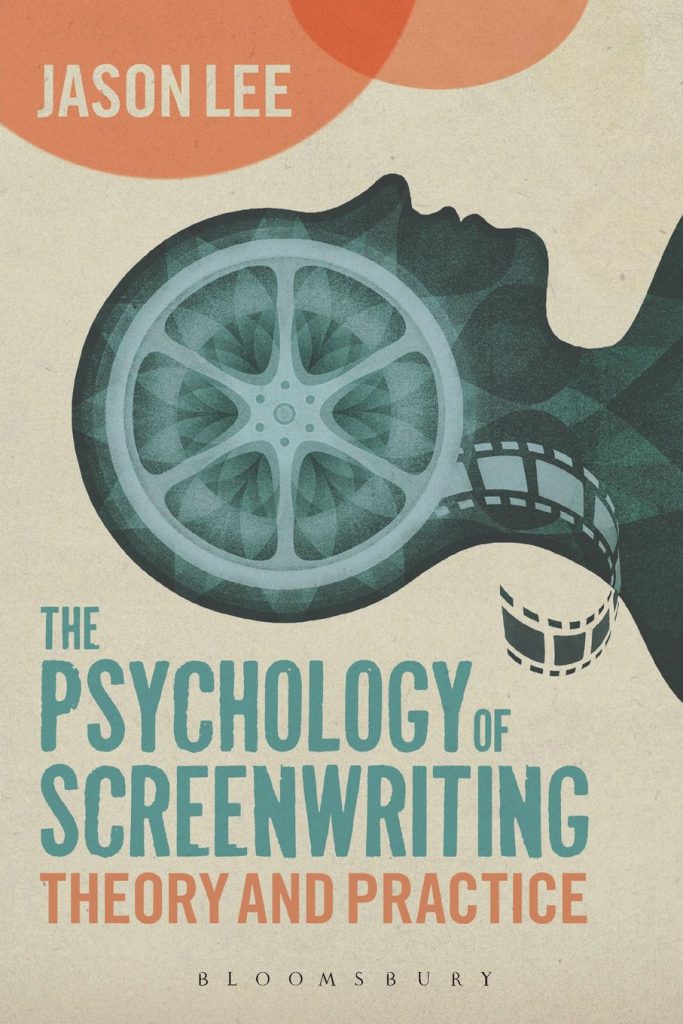Reviewed by Derek Nigro

Bookstores have been given their fair stock of “How-To” books, especially when building up future careers for screenplay writers. Many books in this mainstream genre of how to enter the field tend to focus on things like personal branding, building connections, or how to sell your script. Few books go into literary theory and what writing stories truly means, which is why I took notice of the book The Psychology of Screenwriting: Theory and Practice, authored by Jason Lee. I always thought that psychology was a critical concept to understand when drafting stories, so reading this book seemed like a way to test if I was right.
The author, Jason Lee, worked on his film doctorate at the University of Sussex and began writing scripts in the mid-90s. This book is not, in the literal sense, a “How-To” book, it’s more of a “let’s see how and why this works” book. Lee is more than willing to give advice: in his fourth chapter for example, he puts down multiple bullet points for how to effectively write dialogue in a script, solely as a means of helping the reader on the crafting side of screenwriting. Still, this book comes off as more of a dissection of philosophy, psychology, and literary theory that blends all three to ask exactly what puts value in a story. Lee is just as interested in learning why writing advice works while simultaneously giving it. He demonstrates his willingness to think about the theory from multiple perspectives with his knowledge of multiple foreign film movements (though this book mostly sticks to writing for American movies), historical philosophers and psychologists, and other literary theorists for both novels and scripts.
The beginning of this book is the most literary theory-focused part. Before Lee can explain to us just how to use psychoanalysis and philosophy to better our scripts, we must know how to strip it down until it is nothing and then reassemble it. The first and most common evidence found here revolves around the work of Nietzsche. Despite public opinion, Nietzsche was overly critical of nihilism and thought that it would cause nothing but decadence and that people would require a reevaluation of themselves. Lee even goes as far as to write, “Nietzsche the philosopher saw himself as a psychologist and suggested that an art form akin to film was the way of redeeming people via illusion.”
Lee mentions this concept of films being illusions multiple times. So, how do you, as a screenwriter, get people to believe in your illusion actively? Lee gives us a possible answer in the form of characterization. As he puts it, “To tell meaningful stories we need to go deep within what it means to be human, what makes us human.” This concept, character writing under the lens of philosophy and psychology, is the meat of the book.
Lee has a very distinct ideology for developing characters. He first asks the reader to look at their sense of self before they can develop external selves. This is not meant to be done as an existential exercise, it is more like how we define ourselves and our character. For example, in Chapter 3, Lee discusses examples of how we would describe characters and how it can be limiting. “The word ‘self,’ despite being useful, does not refer to anything that persists; it is just that, a word.” What Lee is describing here and through most of this chapter is that we want our characters to be more depth-driven. For our scripts to be more character-focused, we must first establish that this idea of ‘self’ is restrictive, as it is often associated with a static identity; a script is evermoving, and by logic, so should the self. In simple terms, it’s essential to develop multi-dimensional characters that go beyond simply serving the narrative. Overall this comes off as a very humanistic approach to screenwriting.
One of the most important things a literary theory book can do is highlight its ability to find examples and use them to prove its point. Lee is exceptionally good at finding examples. He can discuss many philosophers, psychologists, and films to highlight his thought process. One noteworthy and arguably his most built-upon example is his idea of “premises” and “treatments.” Lee does not outright describe what he means by “treatment,” only first calling it “a useful tool when writing a script and is part of the pitching process.” Instead, he treats us to a long example created by a second-year bachelor of arts student at the time, Sian James.
The treatment example is 3 pages of story exposition about a girl named Grace Morgan working at a bookstore and facing the moral dilemma of keeping money from an older man who just won a lottery ticket or returning it. When she does decide to bring it back, she gets mugged by a person close to her.
Lee then builds upon this example and dissects how effective the story is at framing itself, going over things like the story’s use of McGuffins in the form of hard candy, or the escalation of the story conflict, starting with mild arguments to yelling, finally ending with an eventual punch outside the bookstore. All of this is done to show the reader not only what a treatment is, but also how effective it is when writing your scripts. As Lee later states, “It needs to be simple, straightforward and obvious.”
The only true critique of his examples is ironically when he discusses movies, as they can feel surface-level at points. He takes a more quantitative approach to discussing them, preferring to talk about three separate films in the span of one page, but not digging very deep as to what makes them tick. Luckily, every other example Lee brings up is fleshed out and used to open discussion into aspects of psychology and philosophy.
Lee concludes his book with the concept of destiny, an intriguing concept to think of in the real world, but when placed in the context of fictional stories, is used as a psychological tool to remind writers exactly why we write. This book describes stories as predestined with the illusion of feeling like free will. It is the writer’s job to uphold that illusion. Lee gives the reader plenty of examples, theory concepts, and psychological and philosophical views on life and dreams, all to circle back to the idea of predetermination. It is creating characters that despite having a predestined story, will still have audience members clamoring for them to make the right or the justified decisions, to have dialogue that leaves viewers wondering what will happen next. This book argues that concept, explores it, and brings justified evidence and material to present its case.
Overall, The Psychology of Screenwriting: Theory and Practice is an educational read: it is willing to explore more theory concepts other than just how to write a script well, or how to sell your script. Lee does an excellent job at dissecting human psychology, philosophy, and their implementation in literary theory.
Derek is a writer with a passion for the craft of writing itself. He enjoys analyzing and dissecting his favorite media pieces to see what makes them tick. When it comes to his stories, he prefers to write comedic tales with speculative twists, usually falling under the sci-fi or horror umbrella, though no story is truly off the table.

